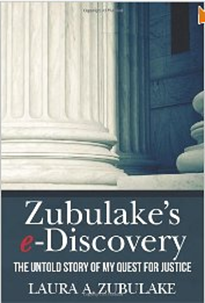eDiscovery Daily is Two Years Old Today!

It’s hard to believe that it has been two years ago today since we launched the eDiscoveryDaily blog. Now that we’ve hit the “terrible twos”, is the blog going to start going off on rants about various eDiscovery topics, like Will McAvoy in The Newsroom? Maybe. Or maybe not. Wouldn’t that be fun!
As we noted when recently acknowledging our 500th post, we have seen traffic on our site (from our first three months of existence to our most recent three months) grow an amazing 442%! Our subscriber base has nearly doubled in the last year alone! We now have nearly seven times the visitors to the site as we did when we first started. We continue to appreciate the interest you’ve shown in the topics and will do our best to continue to provide interesting and useful eDiscovery news and analysis. That’s what this blog is all about. And, in each post, we like to ask for you to “please share any comments you might have or if you’d like to know more about a particular topic”, so we encourage you to do so to make this blog even more useful.
We also want to thank the blogs and publications that have linked to our posts and raised our public awareness, including Pinhawk, The Electronic Discovery Reading Room, Unfiltered Orange, Litigation Support Blog.com, Litigation Support Technology & News, Ride the Lightning, InfoGovernance Engagement Area, Learn About E-Discovery, Alltop, Law.com, Justia Blawg Search, Atkinson-Baker (depo.com), ABA Journal, Complex Discovery, Next Generation eDiscovery Law & Tech Blog and any other publication that has picked up at least one of our posts for reference (sorry if I missed any!). We really appreciate it!
We like to take a look back every six months at some of the important stories and topics during that time. So, here are some posts over the last six months you may have missed. Enjoy!
We talked about best practices for issuing litigation holds and how issuing the litigation hold is just the beginning.
By the way, did you know that if you deleted a photo on Facebook three years ago, it may still be online?
We discussed states (Delaware, Pennsylvania and Florida) that have implemented new rules for eDiscovery in the past few months.
We talked about how to achieve success as a non-attorney in a law firm, providing quality eDiscovery services to your internal “clients” and how to be an eDiscovery consultant, and not just an order taker, for your clients.
We warned you that stop words can stop your searches from being effective, talked about how important it is to test your searches before the meet and confer and discussed the importance of the first 7 to 10 days once litigation hits in addressing eDiscovery issues.
We told you that, sometimes, you may need to collect from custodians that aren’t there, differentiated between quality assurance and quality control and discussed the importance of making sure that file counts add up to what was collected (with an example, no less).
By the way, did you know the number of pages in a gigabyte can vary widely and the same exact content in different file formats can vary by as much as 16 to 20 times in size?
We provided a book review on Zubulake’s e-Discovery and then interviewed the author, Laura Zubulake, as well.
BTW, eDiscovery Daily has had 150 posts related to eDiscovery Case Law since the blog began. Fifty of them have been in the last six months.
P.S. – We still haven't missed a business day yet without a post. Yes, we are crazy.
Disclaimer: The views represented herein are exclusively the views of the author, and do not necessarily represent the views held by CloudNine Discovery. eDiscoveryDaily is made available by CloudNine Discovery solely for educational purposes to provide general information about general eDiscovery principles and not to provide specific legal advice applicable to any particular circumstance. eDiscoveryDaily should not be used as a substitute for competent legal advice from a lawyer you have retained and who has agreed to represent you.







